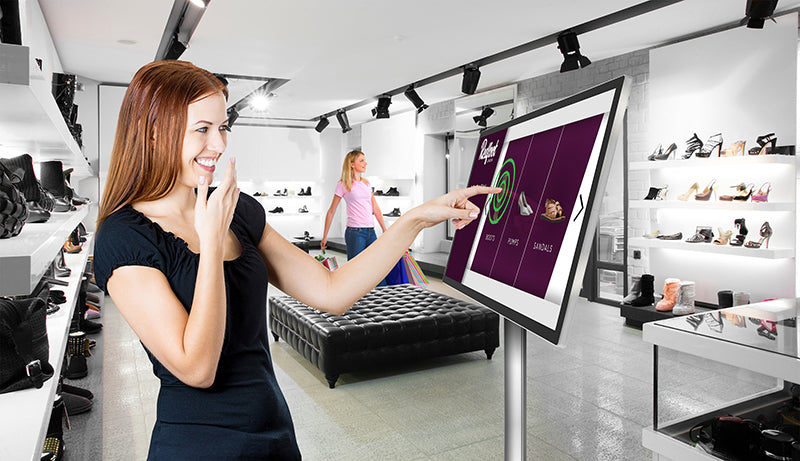Offering self-service and automating back-of-house processes with touchscreen systems saves hospitality businesses time, allows more efficient use of the team’s valuable time and enables easier scaling to meet demand. As well as offering a tool that help’s the hospitality sector operate more profitably, touchscreen solutions also provide them with a way to enhance customer experiences.
A Statista survey found that about half of consumers are more likely to stay in hotels with self-service technology. Additionally, 84% of Gen Z and 76% of millennial consumers prefer tech-based checkout systems.
However, to get the most return on investment (ROI) from a touchscreen system, select hardware suited to their applications with features that will help them achieve their business goals.
Customer-Facing Solutions Touch Screen Display

From the ordering kiosk at a QSR or a made-to-order counter at a grocery store to a self-check-in or concierge kiosk at a hotel, the right touch screen display can enhance the user experience.
For example, consider screen size. Touch screen models typically range from 10” Point of Sale Digital Touch Screens to 55” touch screen kiosks inches or more. The screen needs to be large enough to display the software's user interface properly, but it shouldn't be so big that it's intimidating for a customer to use. Restaurants can choose from a variety of sizes and formats for use in custom kiosks or point of sale (POS) system to create the optimal user experience.
The technology is another factor. Projected capacitive (PCAP) touch technology delivers the types of experiences that guests are familiar with from using consumer touchscreen devices. PCAP is responsive and intuitive; It isn't impacted by sunlight and doesn't have "dead" areas on the screen. When touchscreen solutions are easy to use, customers are more likely to use them again, helping to boost ROI from the implementation.
When consumers are using touchscreens, durability is a concern. Optically bonded displays, which use a clear adhesive to strengthen an LCD with an additional layer of glass, adds durability without impacting touch technology performance.
Touchscreen solutions offer reliable, efficient self-service and automation throughout a hospitality business's operation. However, it's critical to match the touchscreen's features to the use case to maximize ROI. Paying attention to the details and carefully evaluating various touchscreen models will lead to a more informed decision, better performance, and more value.


